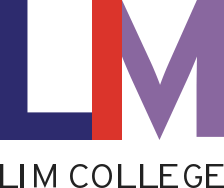The rapid evolution of the gig economy sees more people than ever embracing the "side hustle" and often transitioning passion projects into full-time freelance employment. In fact, research from Upwork and the Freelancers Union of America found that 36% of American workers are freelancers, with those numbers predicted to pass 50% by 2027.
If you are interested in building your experience, supplementing your income, or are driven by an entrepreneurial spirit, freelancing might be for you. But what will it take to succeed, and where should you start?
How does freelancing work?
A freelancer is self-employed and isn’t committed to only one, long-term employer. Instead, you can work independently for multiple companies or clients. Freelancers typically charge by the hour, day, project, or report and are not required to register as a business if you work under your own name. Freelancers can work anywhere they choose, whether it be their home or a co-working office space, such as WeWork. According to Forbes, some of the best freelancing gigs are in marketing, web development, writing, social media, graphic design, and business project management.
How do you brand yourself?
Start this process by asking yourself questions and brainstorming answers. What are your goals for this business? What makes you stand out from the competition? Who's your target audience? You want to create a story about your brand and an aesthetic to share with clients. Your website as well as other social media platforms should capture this.
Don't forget to include what services you offer, work samples or other relevant content, and your contact information. This is a way to make connections with people in your industry and start building your clientele. (Students can use the professional digital portfolio they created in their academic courses.)
What Technology is Needed?
Depending on the type of freelance work you're doing, there are plenty of tools to help you along the way. Some examples include Google Apps, Cushion, Hootsuite, Trello, Skype, Dropbox, Canva, Adobe, Proposify, and Square, with many offering student discounts.
If you freelance from home:
- Create a designated workspace and ensure that it is free of distractions.
- Know that work-related expenses, which can include Wi-Fi, professional publications, supplies, technology, and more, are tax-deductible.
- Businesses are based worldwide, so always confirm the time zone for any calls or appointments, and ensure your equipment is working properly prior to meetings.
Stats:
- 56% of freelancers fall into the $20 - $59 per-hour range.
- Writers on average can be compensated $58 - $82 per blog post written.
- Designers on average can be compensated $52 - $90 per hour.
- Programmers on average can be compensated $63 - $180 per hour.
Sites designed to help freelancers who are just starting out:
24 Seven
Upwork
Freelancer
Solomon Page
People Per Hour
Parker Dewey
Lord & Taylor Smart Styling Program: Handshake or contact: styling@lordandtaylor.com


